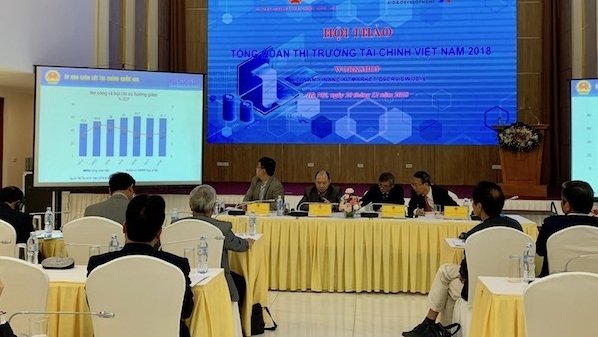VN’s growth estimated at 6.9-7% in 2018: NFSC
VGP - According to the National Financial Supervisory Commission (NFSC) , the Vietnamese economy is estimated to expand by 6.9-7% in 2018, driven by manufacturing and services.
 |
|
The workshop to release a report on the overview of Vietnam’s financial market |
The regulator said such a growth rate will be the highest in ten years, citing a report on the overview of Viet Nam’s financial market.
In 2018, despite slowing global trade due to geopolitical tensions and the US-China trade war, the Vietnamese economy continued to record a variety of notable achievements.
In addition, trade agreements such as the Comprehensive and Progressive Agreement for Trans-Pacific Partnership (CPTPP) and the EU-Viet Nam Free Trade Agreement (EVFTA), which are expected to come into effect in 2019, may also bring positive impacts.
The NFSC added that Viet Nam’s macroeconomic foundations were maintained, with inflation contained at 3.6% and core inflation remaining stable below 1.5%, while major balances of the economy were guaranteed.
In addition, this year saw a greater role of the capital market, and a decreasing reliance on the banking sector, in supplying capital for the economy.
The ratio of banks’ capital supply fell but it was more effective and of better quality.
In the meantime, the stock market grew strongly, with market capitalisation now equivalent to 75% of GDP, exceeding the target set for 2020.
The report by the NFSC also forecasts that Vietn Nam’s economy could expand 7% in 2019, but the country needs bolder institutional reforms to improve the business climate and increase private investment.
Inflation is projected at 4% so long as price adjustments to various public services are strictly controlled.
By Vien Nhu

